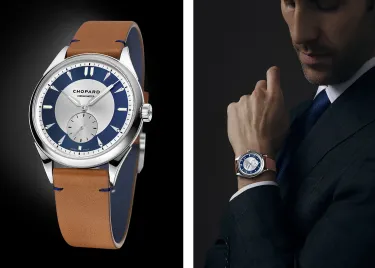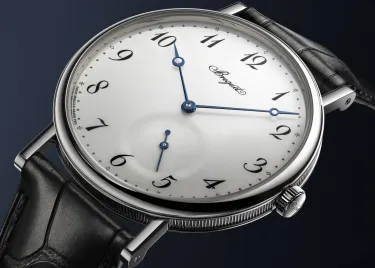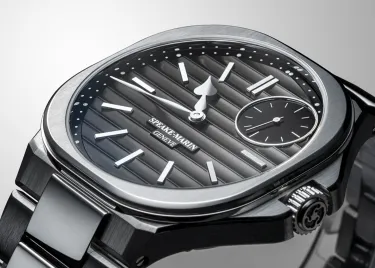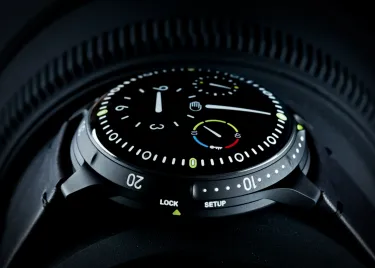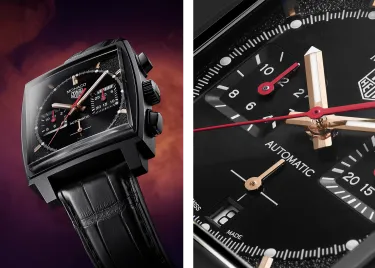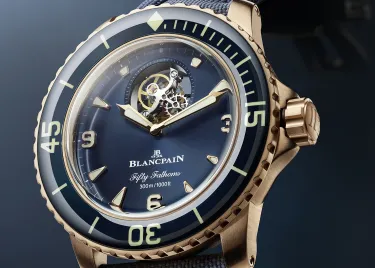Focus
Small second, big impression!
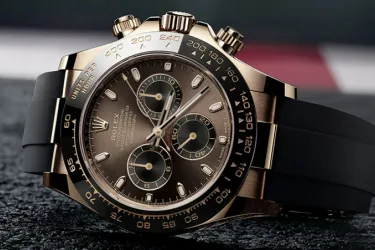
Small second? Just a name! Because its role on the dial can be inversely proportional to its size...
Do you know what a small second is? This is the name given to the seconds countdown which is not done by a central hand, but by a small off-centre counter which is dedicated only to this. But still, the "small" second is sometimes what makes the watch face beautiful!
At 6 o'clock: the majestic setting
The off-centre seconds counter at 6 o'clock is the great classic. But where does it come from? From the "Belle Époque", when the watch was not yet on the wrist, but in the pocket. A century ago, the watch did not yet indicate the second: only the hours and minutes in the centre. Gradually, watchmakers added this famous seconds counter. And why did they put it off-centre at 6 o'clock and not at 3 o'clock for example? Well, because the movements were not designed to accommodate it in the centre, so this small second was moved to 6 o'clock. This choice also allowed, aesthetically, to balance the face of the watch, with the name of the brand which was vertically above, at 12 o'clock. Today, if you want a very classical style watch, you have to choose a small second at 6 o'clock, like at Patek Philippe (Calatrava), A. Lange & Söhne or Chopard. In a much more affordable way, at Seiko.
Eccentric: classic, but not too much!
Watchmaking, if you want to sum up its beauty, is a sum of small details. Sometimes, some brands have fun moving the small second traditionally at 6 o'clock, to a place right next to it. It's an option that adds a little twist to the dial. And if you fall for one of these models, it shows that you adhere to the classic aesthetic, but with a personal touch. At Breguet, for example, the 7147 is not at 6 o'clock, but between 5 and 6 o'clock. Small detail, big personality!
And if you want to go further to mark your originality, no problem! You can go to Speake-Marin. Its "Ripples" model was one of the favourites at Watches and Wonders 2022, with its small second between 1 and 2 o'clock. At first, it's surprising, but it's a choice that you get used to very quickly!
It's not offbeat enough yet? Then let's go to Ressence! This is an independent Belgian watchmaker who has created a watch with a dial that turns permanently on itself. Result: the small second goes around the dial in 12 hours. On the picture, we can see it between 9 and 10 o'clock, and it will continue to turn to the right. Unique!
Chrono option: 9am, full speed ahead!
You've probably heard of the words "bicompax" and "tricompax" (if not, don't panic!). They refer to dials with two or three counters, one or two of which are dedicated to the stopwatch. But in all cases, the place at 9 o'clock will be reserved for the small second. It is thus the ideal position to display your racing spirit. In bicompax, it will be for example the Monaco from TAG Heuer.
In tricompax, it is difficult to miss the Rolex Daytona. The examples are innumerable, like Zenith or Breitling.
Coupled with a tourbillon: beware, it gets complicated (complicated, complication, little pun...)!
Last option: the small second at 6 o'clock... which is set with a tourbillon. It is a very "high watchmaking" option, the sign of a well-informed collector. The budget is clearly not the same, but with a tourbillon / small second at 6 o'clock, one enters the very closed circle of prestige, of great luxury. You can find them for example at Vacheron Constantin (Traditionnelle model).
In a much rarer way, the tourbillon can be positioned at noon, as at Blancpain (Fifty Fathoms 8 days). It can also be found in a sport version, as at Ulysse Nardin, or even in a Skull version, as at Bell & Ross.
To each his style, his budget and... his small second! And I promise, it's not only the location that matters.
